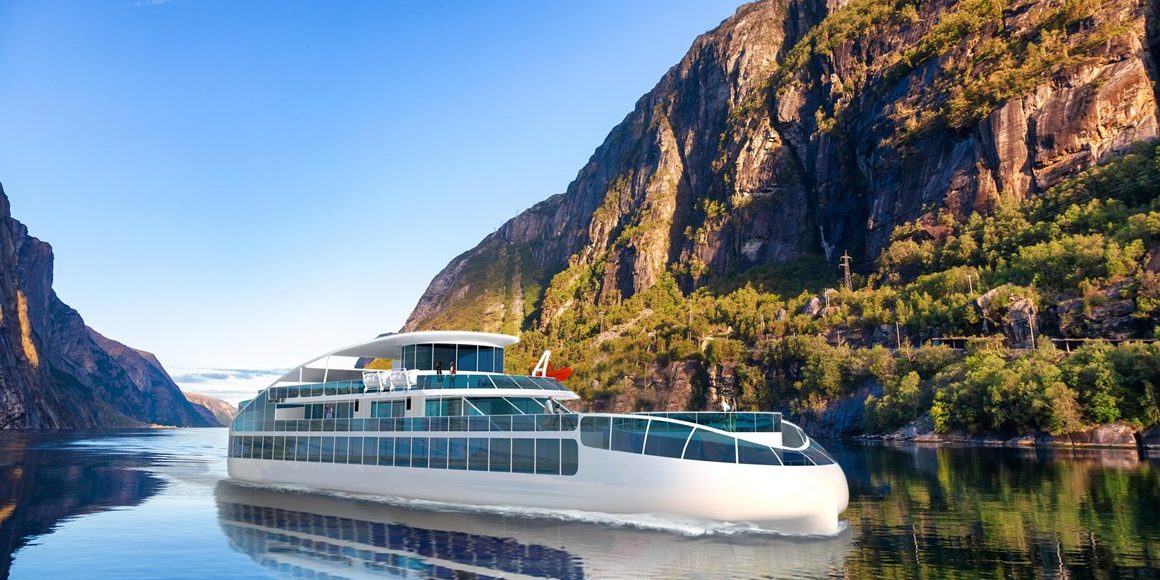Havyard presents electric sightseeing boat concept
The Norwegian shipbuilder Havyard has presented a design concept for electrically powered sightseeing ships for use in cities and fjords. The concept was developed within the framework of a cooperation agreement concluded last year with the Norwegian research organisation SINTEF.
The construction of the new zero-emission sightseeing ship is based on a design by Havyard designer Stig Magne Espeseth. The design study is 70 metres long, is intended to offer space for 600 to 800 passengers and will travel at a speed of ten to eleven knots. At the heart of the ship’s design is the claim to offer passengers the most spectacular possible sailing experience. Accordingly, the study is equipped with spacious indoor and outdoor areas and large windows. Wheelchair users should also be able to move freely on the ships.
Havyard and SINTEF have embedded the design study in a novel sightseeing concept to protect World Heritage sites and coastal cities. The idea is that in the future, tourists will be able to switch from large cruise ships to emission-free sightseeing ships on floating hubs in order to reach the narrow fjords or city centres. According to the partners, these ‘floating hubs’ could be installed at the mouth of fjords or outside the cities and could also house the charging infrastructure for the e-ships. Havyard and SINTEF have a charging solution with a buffer battery in mind to relieve the network.
The partnership between Havyard and SINTEF has been in place since July 2019 and is aimed primarily at developing new solutions for a more environmentally friendly shipping industry. Havyard is contributing its know-how in the field of electric ships, gained over the past ten years. SINTEF contributes its scientific results collected at the SFI Smart Maritime research and development centre.
Havyard has so far made a name for itself primarily as an electric ferry supplier for the Norwegian ferry operator Fjord1. The company is also working with Linde Engineering and PowerCell Sweden on a fuel cell system for large ships. The plan is to connect several 200-kW modules in parallel, resulting in a total output of 3.2 megawatts. The talk is of “pioneering work” and of “the most powerful maritime fuel cell system in history”.





0 Comments